Understanding apocalyptic terrorism countering the radical mindset
Bạn đang xem bản rút gọn của tài liệu. Xem và tải ngay bản đầy đủ của tài liệu tại đây (4.35 MB, 289 trang )
Understanding Apocalyptic
Terrorism
This book explores a cross-cultural worldview called ‘radical apocalypticism’ that underlies the majority of terrorist movements in the twenty-first
century.
Although not all apocalypticism is violent, in its extreme forms radical
apocalypticism gives rise to terrorists as varied as members of Al Qaeda,
Anders Behring Breivik, or Timothy McVeigh. In its secular variations, it
also motivates ideological terrorists, such as the eco-terrorists Earth Liberation Front or The Unabomber, Ted Kaczynski. This book provides an original paradigm for distinguishing between peaceful and violent or radical
forms of apocalypticism and analyzes the history, major transformations,
and characteristics of the apocalyptic thought system. Using an interdisciplinary and cross-cultural approach, this book discusses the mechanisms of radicalization and dynamics of perceived oppression and violence
to clarify anew the self-identities, motivations, and goals of a broad swath
of terrorists. As conventional counter-terrorism approaches have so far
failed to stem the cycle of terrorism, this approach suggests a comprehensive “cultural” method to combating terrorism that addresses the
appeal of radical apocalyptic terrorist ideology itself.
This book will be of much interest to students of apocalypticism, political violence, terrorism and counter-terrorism, intelligence studies, religious studies, and security studies.
Frances L. Flannery is Professor of Religion and Director of the Center for
the Interdisciplinary Study of Terrorism and Peace (CISTP), James
Madison University, USA, and author of Dreamers, Scribes and Priests: Jewish
Dreams in the Hellenistic and Roman Eras (2004) and co-editor (with Rodney
Werline) of Experientia, Volume One: Inquiry into Religious Experience in Early
Judaism and Early Christianity (2008).
Political Violence
Series Editor: David Rapoport
This book series contains sober, thoughtful, and authoritative academic
accounts of terrorism and political violence. Its aim is to produce a useful
taxonomy of terror and violence through comparative and historical analysis in both national and international spheres. Each book discusses
origins, organizational dynamics and outcomes of particular forms and
expressions of political violence.
Aviation Terrorism and Security
Edited by Paul Wilkinson and
Brian M. Jenkins
Counter-Terrorist Law and
Emergency Powers in the United
Kingdom, 1922–2000
Laura K. Donohue
The Democratic Experience and
Political Violence
Edited by David C. Rapoport and
Leonard Weinberg
Inside Terrorist Organizations
Edited by David C. Rapoport
The Future of Terrorism
Edited by Max Taylor and John Horgan
The IRA, 1968–2000
Analysis of a secret army
J. Bowyer Bell
Millennial Violence
Past, present and future
Edited by Jeffrey Kaplan
Right-Wing Extremism in the
Twenty-First Century
Edited by Peter H. Merkl and
Leonard Weinberg
Terrorism Today
Christopher C. Harmon
The Psychology of Terrorism
John Horgan
Research on Terrorism
Trends, achievements and failures
Edited by Andrew Silke
A War of Words
Political violence and public debate
in Israel
Gerald Cromer
Root Causes of Suicide Terrorism
The globalization of martyrdom
Edited by Ami Pedahzur
Terrorism versus Democracy
The liberal state response, second
edition
Paul Wilkinson
Countering Terrorism and WMD
Creating a global counter-terrorism
network
Edited by Peter Katona,
Michael D. Intriligator and
John P. Sullivan
Mapping Terrorism Research
State of the art, gaps and future
direction
Edited by Magnus Ranstorp
The Ideological War on Terror
Worldwide strategies for
counter-terrorism
Edited by Anne Aldis and
Graeme P. Herd
The IRA and Armed Struggle
Rogelio Alonso
Homeland Security in the UK
Future preparedness for terrorist
attack since 9/11
Edited by Paul Wilkinson
Terrorism Today, Second Edition
Christopher C. Harmon
Understanding Terrorism and
Political Violence
The life cycle of birth, growth,
transformation, and demise
Dipak K. Gupta
Global Jihadism
Theory and practice
Jarret M. Brachman
Combating Terrorism in Northern
Ireland
Edited by James Dingley
Leaving Terrorism Behind
Individual and collective
disengagement
Edited by Tore Bjørgo and John Horgan
Unconventional Weapons and
International Terrorism
Challenges and new approaches
Edited by Magnus Ranstorp and
Magnus Normark
International Aviation and Terrorism
Evolving threats, evolving security
John Harrison
Walking Away from Terrorism
Accounts of disengagement from
radical and extremist movements
John Horgan
Understanding Violent
Radicalisation
Terrorist and jihadist movements
in Europe
Edited by Magnus Ranstorp
Terrorist Groups and the New
Tribalism
Terrorism’s fifth wave
Jeffrey Kaplan
Negotiating with Terrorists
Strategy, tactics, and politics
Edited by Guy Olivier Faure and
I. William Zartman
Explaining Terrorism
Causes, processes and
consequences
Martha Crenshaw
The Psychology of
Counter-Terrorism
Edited by Andrew Silke
Terrorism and the Olympics
Major event security and lessons
for the future
Edited by Anthony Richards,
Peter Fussey and Andrew Silke
Irish Republican Terrorism and
Politics
A comparative study of the official
and the provisional IRA
Kacper Rekawek
Fault Lines in Global Jihad
Organizational, strategic and
ideological fissures
Edited by Assaf Moghadam and
Brian Fishman
Militancy and Political Violence in
Shiism
Trends and patterns
Edited by Assaf Moghadam
Islamist Radicalisation in Europe
An occupational change process
Daniela Pisoiu
An International History of
Terrorism
Western and non-Western
experiences
Edited by Jussi Hanhimäki and
Bernhard Blumenau
Democracy and Terrorism
Friend or foe?
Leonard Weinberg
State Terrorism and Human Rights
International responses since the
end of the Cold War
Edited by Gillian Duncan, Orla Lynch,
Gilbert Ramsay and Alison Watson
Prisons, Terrorism and Extremism
Critical issues in management,
radicalisation and reform
Edited by Andrew Silke
The Psychology of Terrorism,
Second Edition
John Horgan
Victims of Terrorism
A comparative and interdisciplinary
study
Edited by Orla Lynch and
Javier Argomaniz
Lone-Actor Terrorists
A behavioural analysis
Paul Gill
Understanding Terrorism
Innovation and Learning
Al-Qaeda and beyond
Edited by Magnus Ranstorp and
Magnus Normark
Evolutionary Psychology and
Terrorism
Edited by Max Taylor, Jason Roach
and Ken Pease
Understanding Apocalyptic
Terrorism
Countering the radical mindset
Frances L. Flannery
Understanding Apocalyptic
Terrorism
Countering the radical mindset
Frances L. Flannery
First published 2016
by Routledge
2 Park Square, Milton Park, Abingdon, Oxon OX14 4RN
and by Routledge
711 Third Avenue, New York, NY 10017
Routledge is an imprint of the Taylor & Francis Group, an informa business
© 2016 Frances L. Flannery
The right of Frances L. Flannery to be identified as author of this
work has been asserted by her in accordance with sections 77 and 78
of the Copyright, Designs and Patents Act 1988.
All rights reserved. No part of this book may be reprinted or
reproduced or utilized in any form or by any electronic, mechanical,
or other means, now known or hereafter invented, including
photocopying and recording, or in any information storage or
retrieval system, without permission in writing from the publishers.
Trademark notice: Product or corporate names may be trademarks or
registered trademarks, and are used only for identification and
explanation without intent to infringe.
British Library Cataloguing-in-Publication Data
A catalogue record for this book is available from the British Library
Library of Congress Cataloging-in-Publication Data
Flannery, Frances.
Understanding apocalyptic terrorism: countering the radical
mindset / Frances L. Flannery.
pages cm. -- (Political violence)
Includes bibliographical references and index.
1. Terrorism--Religious aspects. 2. Terrorism. 3. Political violence-Religious aspects. I. Title.
BL65.T47F53 2016
363.325'17--dc23
2015010689
ISBN: 978-1-138-77954-9 (hbk)
ISBN: 978-1-315-77116-8 (ebk)
Typeset in Baskerville
by Wearset Ltd, Boldon, Tyne and Wear
For Harry, Sam, Lloyd, and Susie
This page intentionally left blank
Contents
List of abbreviations
Acknowledgments
Introduction
xi
xiii
1
PART I
Roots of the apocalyptic worldview
15
1
The original Book of Revelation
17
2
By this sign you will conquer: transformations of the Book
of Revelation
34
PART II
The apocalyptic formula and terrorism
3
57
How not to make a terrorist: peaceful vs. radical
apocalypticism
59
“One who swims in the sea does not fear rain”: Al Qaeda and
Sunni radical apocalypticism
84
5
The case of the self-declared “Islamic State”: ISIS/ISIL
127
6
“The Lord God is a Man of War”: Christian Identity teaching
and radical apocalyptic terrorism
143
The humanpox versus green fire: eco-terrorists and
eco-activists
186
Bringing Armageddon: Aum Shinrikyo
214
4
7
8
x Contents
PART III
Conclusion
239
9
Creating peace in an apocalyptic moment
241
Index
265
Abbreviations
AAA
AAR
ADL
ALF
AQI
BATF
BMIS
CIA
CSA
CSCC
CENTCOM
CISTP
CSG
CWC
ELF
DCI
DIA
DOJ
EMETIC
FAA
FBI
GCI
HTS
HUMINT
IAFIE
ICRD
IPCC
ISIS/ISIL
JP
KIM
American Anthropological Association
American Academy of Religion
Anti-Defamation League
Animal Liberation Front
Al Qaeda in Iraq
Bureau of Alcohol, Tobacco, Firearms and Explosives
Black Mountain Indigenous Support
US Central Intelligence Agency
Covenant, Sword, and Arm of the Lord
The State Department Center for Strategic
Counterterrorism Communications
United States Central Command
Center for the Interdisciplinary Study of Terrorism and
Peace
Counter-terrorism Security Group
Chemical Weapons Convention
Earth Liberation Front
Director of Central Intelligence
Defense Intelligence Agency
US Department of Justice
Evan Mecham Eco Terrorist International Conspiracy
Federal Aviation Administration
US Federal Bureau of Investigation
Grace Communion International Church
Human Terrain System
Human Intelligence
International Association for Intelligence Educators
International Center for Religion and Diplomacy
Intergovernmental Panel on Climate Change
Islamic State in Iraq and Syria/Islamic State of Iraq and the
Levant
Joint Publication (of the US Military)
Kingdom Identity Ministries
xii Abbreviations
KKK
MAK
NATO
NCMI
NGA
NGO
NIC
NPT
NSA
ODNI
OPCW
PALS
PDB
POGO
PSI
PSIA
RAMPS
REAR
REM
SBL
SEIB
SHAC
SPLC
SSSR
START
SWAT
UFO
UNEP
UNICEF
WMD
WMO
ZOG
Ku Klux Klan
Mektab al Khidamat
North Atlantic Treaty Organization
National Center for Medical Intelligence
National Geo-spatial Intelligence Agency
Non-governmental Organization
National Intelligence Council
National Philanthropic Trust
National Security Agency
Office of the Director of National Intelligence
Organization for the Prohibition of Chemical Weapons
Portraits of American Life
Presidential Daily Briefings
Project on Government Oversight
Perfect Salvation Initiation
Permanent Subcommittee on Investigations of the
Committee on Governmental Affairs
Radical Action Mountain Peoples Survival
Radical Environmental and Animal Rights
Radical Environmental Movement
Society of Biblical Literature
Senior Executive Intelligence Briefs
Stop Huntingdon Animal Cruelty
Southern Poverty Law Center
Society for the Scientific Study of Religion
National Consortrium for the Study of Terrorism and
Responses to Terrorism
Special Weapons And Tactics Team
unidentified flying object
United Nations Environmental Program
United Nations Children’s Fund (formerly United Nations
International Children’s Emergency Fund)
Weapon of Mass Destruction
World Meterorological Organization
Zionist Organized Government
Acknowledgments
This field-crossing project marks a point in a long intellectual journey. I
could never have arrived at these ideas without relying heavily on the work
of a host of excellent scholars in myriad fields, including religion, biblical
studies, political science, intelligence analysis, sociology, anthropology,
philosophy and international relations. I am particularly indebted to those
whom I cite (see p. i) throughout the book and hope that my appreciation
is evident. Any mistakes are definitely my own.
I heartily thank the Department of Philosophy and Religion and the
College of Arts and Letters at James Madison University for the educational leave grant in 2014–2015 that enabled me to finally finish this book,
so many summer and winter breaks in the making. I appreciate the great
direction and flexibility of the editors at Routledge, particularly Hannah
Ferguson and David Rapoport. Special thanks go to my copy-editor, Anna
Kelleher, for being tireless, careful, and funny. She might wish to reword
that sentence. I must also thank Noel Hendrickson, at whose invitation the
conceptual seeds of this project began with a grant sponsored by the Institute for National Security Analysis at JMU.
So many scholars and colleagues have informed my thinking on this
topic over the years that it is impossible to mention them all, but a few
deserve special mention. Reading Mark Juergensmeyer as a newly minted
Ph.D. started me on this journey and his work continues to influence my
thinking. I am gratified to be a part of a rich and innovative guild, the
Society of Biblical Literature, which has proven to be a supportive home
for a field-traversing biblical scholar. Several scholars of Apocalypticism,
including George Nickelsburg, John J. Collins, Christopher Rowland,
Michael Stone and Alan Segal have been my generous teachers, mentors,
and conversation partners. They have sharpened my thoughts on apocalypticism in immeasurable ways. My attention to and understanding of the
“moods and motivations” of religious experience, which forever transformed my approach to religion, emerged from conversations with my
friend and main intellectual partner, Rodney Werline. Since he and I
co-founded the Religious Experience program unit at the Society of Biblical Literature in 2005, I have benefited profoundly and repeatedly from
xiv Acknowledgments
interactions with other dear members of the “Experientia Group” and a
small circle of highly cherished friends in the Society of Biblical Literature. These include Colleen Shantz, Angela Kim Harkins, Kelley Coblentz
Bautch, Judy Newman, Bert Jan Lietaert-Peerbolte, Celia Deutsch, Robin
Griffith-Jones, Daphna Arbel, James Davila, Daniel Falk, Anathea PortierYoung, and Jack Levison. My understanding of intelligence analysis has
been greatly enriched by conversations with Timothy Walton, Mike
Deaton, Ron Wulf, and Rick Gill.
I genuinely thank my students, especially those brave enough to take my
“Apocalypticism, Religious Terorism, and Peace” course at James Madison
University, the “Simulations of Outcomes of the Iranian Nuclear Program”
course that I had the privilege of teaching with Timothy Walton for JMU
and the University of Virginia, and my “Apocalyptic Thought and Movements course” at Hendrix University. It has been a genuine privilege to
teach them and learn from them; without them I could not have hammered
out my thoughts on radical apocalypticism over the last fifteen years. In particular, three students’ teamwork on ELF changed my views of eco-terrorism,
and I thank Amanda Wilson, Joshua Ryan Stairs, and Luke Manning.
My colleagues in the Center for the Interdisciplinary Study of Terrorism
and Peace (CISTP) have been my invaluable conversation partners. Their
continued influence on my thinking is undeniable and profoundly appreciated. These include David Owusu Ansah, Edward Brantmeier, Jennifer
Connerley, Lennie Echterling, Glenn Hastedt, Shin-Ji Kang, Sallie King,
Jonathan Miles, Maria Papadakis, Anne Stewart, and Timothy Walton, as
well as the student interns James Prince, Christiaan Firmani, Katherine
Hussey, Emily Spiwak, and Sidney Barton. Jonathan Jackson has lent
insights from afar. At JMU I have been fortunate to work with great colleagues in two supportive departments, the Department of Philosophy and
Religion and the Intelligence Analysis program. I profoundly appreciate
the support of Dean David Jeffrey, Provost Jerry Benson, President Jon
Alger, and the Office of Research and Scholarship, especially Ken
Newbold, who understood my vision of CISTP and helped us get started. I
also thank CISTP’s intellectual partners, the Handa Center for the Study
of Terrorism and Political Violence at the University of St. Andrews and
the International Center for Religion and Diplomacy, especially Rebecca
Cataldi and Doug Johnston. The work of the Kosovo Working Group at
JMU and Eastern Mennonite University continues to inform my thinking
on ways to achieve peace and stem extremism by improving the social lives
of people. I thank my co-chair, Edward Brantmeier, for his extreme dedication to the Kosovo project, along with Ambassador Ahmet Shala, Hatixje
Shala, and our partners in Kosovo. Their friendship means much to me.
A work such as this entails a deep emotional journey, even when I write
in an academic style. It is difficult to read and think about the tragedies in
this project. I would have experienced much more psychological wear and
tear without the unfailing support of a network of friends, old and new.
Acknowledgments xv
Peg and Marv B. have been hearing about and reading pieces of my
work since 2009, providing tremendous support and deep friendship. In
addition, I wish to thank Emily C., Jonathan J., Liz B., Mike D., Jenny R.,
Sara T., Isabel D., Bev B., Elizabeth M., Jim M., Kay H., Kimberly D., Tom
J., Jennifer C., Andrea V., Lisa T., Michael S., Kristen C., Tami K., Alan K.,
Chanel N., Tracy L., Perry N., Keli B., Chris M., Toni M., Daiken N.,
C.H.M., Valerie M., Cassie B., Joe B., Sue E., Maggie F., Buck F., and Casey
F. I cannot name all of my cherished people here and I ask them to please
forgive me for any omissions.
My family has made all of this possible. My mom Susie has been generous with time, food, and advice. My dad Lloyd is severely missed. Above
all, I love and thank Sam and Harry, my heart walking around in other
bodies. I dedicate this book to them.
This page intentionally left blank
Introduction
On September 11, 2001, I watched the television coverage of the first
plane hitting the World Trade Center tower in New York. I instinctively
put my hand on my belly, which held my growing baby, and wondered
what kind of world my son would grow up in. Like other Americans, I was
terribly disturbed and saddened. No one could have imagined those specific scenes of devastation, those particular lives impacted, in scenes and
memories that would become iconic.
However, to be honest, I wasn’t completely surprised. I was a newly
graduated Ph.D. in Religion who had just taught a course on Apocalyptic
Movements at a small liberal arts college in Arkansas. In that course, which
I’ve now taught multiple times at a big Virginia liberal arts university, I
recognized something that not many in the media seemed to be discussing, even in the aftermath of 9/11. Put simply, the actions of many terrorists are not, in fact, nonsensical or irrational; they are repulsive, but also
predictable. They make perfect sense within the context of the apocalyptic
worldview.
The nature of terrorism has changed dramatically in the last thirty
years. In 1980, only two of sixty-four active terrorist groups had an overtly
religious self-identification or agenda (Hoffman 2006, 85).1 By 2004, of
113 active terrorist groups, about half had explicitly religious self-identities
and motivations (an assessment that depends on a narrow definition of
religion and is probably conservative) (ibid., 86). More importantly the
attacks with the greatest number of casualties have been conducted by religious
groups or individuals associated with religious groups (ibid., 86–88).2
Despite the fact that such groups differ widely in their cultural contexts,
as a scholar I find that they exhibit the characteristics of a thought system
that biblical scholars call “apocalypticism,” which has been around for thousands of years. However, apocalypticism in and of itself can give rise to either
peace or violence. Those apocalyptic groups that do commit violence accept
the basic apocalyptic worldview that others do, plus a steady set of other
propositions, resulting in a reality map that I call “radical apocalypticism.”
Hence, despite the dizzyingly complex global situation in what was
once called “the War against Terror,” we can shed some light on the
2 Introduction
overarching goals, ethics, and motivations of most terrorists. From the
Islamist extremism of Al Qaeda to the seventy-seven murders of (mostly)
children by Neo-Templar Anders Behring Breivik in Norway, the overarching worldview that lies at the root of religious terrorism, radical apocalypticism, includes some consistent, trans-cultural propositions about
reality. To non-believers these ideas seem entirely non-intuitive, yet for
believers, a radical apocalyptic worldview organizes the whole of reality
into a coherent portrait, accounting for every circumstance, including
wars, social identities, political events, astronomical events, or even the
weather.
Definition of apocalypticism
As a biblical scholar as well as a scholar of religious terrorism, I am using
the framework of “apocalypticism” in a technical sense that goes somewhat
against the popularized meaning of “apocalypse” as the catastrophic end
of the world. Indeed, this latter usage appears not only in media and
popular culture, but also in scholarly treatments of terrorism. The fact that
I have chosen to go against this enormous tide of usage is not simply
because I am wedded to the jargon of my field! Rather, I have found that
this limited equation of “apocalypse” and “apocalyptic” with the end of the
world has prohibited a full understanding of the systemic relationship
between terrorism and the symbolic universe or worldview that I am
calling radical apocalypticism. My hope is that by grounding the full
meaning of “apocalypticism” in the original texts of early Judaism, Christianity, and Islam, we can appreciate much more fully the potent draw of
the apocalyptic worldview, which has proven to be so “sticky” that it has
lasted approximately two and half millennia.
Hence, I follow a biblical studies and history of religions approach and
define apocalypticism as the system of thought held by certain movements,
the themes of which are first found in the early Persian, Jewish, Christian
and Muslim apocalypses – literary texts such as the Avesta, 1 Enoch, Daniel,
the Gospel of Mark, the Book of Revelation, 4 Ezra, and the Qur’an.
Within biblical studies, many scholarly definitions of “apocalypse” and
“apocalypticism” exist, each of which attempts to distill the few essential
features of apocalypse, a literary genre, and apocalypticism, the socio-religious
worldview of which it partakes and in turn generates (e.g., Collins 1979;
Hanson 1962; Rowland 1982). Drawing on a rich body of scholarship, and
updating these insights for the contemporary era, I define “apocalypticism” as: an orientation to reality that maintains that the divine (or “transcendent”) realm has sent a revelation to a select few persons, the righteous,
disclosing the divine view through a transformative or meaningful experience. This
revelation affirms that evil forces rule the mundane realm that the righteous now
inhabit, but someday there will be divine intervention that will dramatically change
the operation of the cosmos by overcoming this evil, allowing the righteous to partake
Introduction 3
more fully of the divine reality. This transformation may or may not involve a
catastrophic end to the world, but it does typically involve a dramatic, profound change to history as we know it, such that the experience of it is as a
new world. Typically, this change rights a cosmic wrong that has affected
an entire nation or cosmos (Sacchi 1990).
Apocalypticism does not always focus on a terrestrial, collective human
salvation from doom. Sometimes the righteous escape the ordinary earthly
realm altogether, and sometimes they must be transformed into a nonhuman or supra-human state in order to attain salvation. The key is that
believers maintain they are the special recipients of revelation, aligned
with the divine or transcendent will. They believe that the revelation –
which is quite often an interpretation of an older, original revelation
(such as the Bible or the Qur’an) – enables them to view reality from an
ultimate, transcendent, or divine point of view.
While the anticipation of a dramatic change drives the apocalyptic
worldview, the recipients of the revelation do not believe that they need to
wait until the end of history to experience the rescue of the cosmos. In
some small way, they believe that they are able to partake of that ultimate
reality now. This might occur by creating a temporary corner of “paradise,”
such as a pure community, or by having mystical experiences, or simply by
obeying the will of the divine (Flannery 2014). Eventually, they believe
they will fully overcome the spatial, temporal, or ethical/purity/physical
constraints of this world. Thus, as a starting point, they dismiss the values
and importance of the mundane world in which we all live.
For some people, this world feels like it has gone awry and is broken.
The apocalyptic worldview affirms the pain they feel and points to a clear
culprit who is the cause of evil. Apocalyptic belief gives their suffering
meaning and promises them a special place in a good and restored world
to come. The more that they become fully committed to that utopia, their
“real world,” the more their care for the “temporary world” that the rest of
us share fades away.
Definitions of terrorism
In the literature on terrorism, there are hundreds of definitions, some
emphasizing methods, others effect and others intention (Stern 2003, xx).
Altogether, they cover an extensive range of aspects, including the intent
to create broad psychological effects, victim–target differentiation, the
planned nature of terrorist acts, extra-normality, the targeting of civilians
and publicity (e.g., Hoffman 2006, 34). Hoffman has simply stated, “Terrorism is thus violence – or equally important, the threat of violence –
used and directed in pursuit of, or in service of, a political aim,” and he
notes that it is “ineluctably political in aims and motives” (ibid., 2, 40).
While he is correct that terrorism almost always has political dimensions,
the question is whether dividing “political terrorism” from “religious
4 Introduction
terrorism” is appropriate in the case of apocalyptic terrorists, who conceptually fit the political realm into a symbolic universe that anticipates the
imminent arrival of a divine form of governance.3 Radical apocalyptic terrorism is a thought system that deeply intertwines theological claims with
political and social dimensions.
Occasionally the view arises in scholarship and the media that terrorists
use religion to mask their true political views. This implies that the terrorists’ religious views are not genuine, which is not the same as saying that
geo-politics and religion are inextricably combined, especially in apocalyptic systems.
Compounding the difficulty of arriving at a satisfying definition of terrorism is the fact that there is no internationally agreed-upon legal definition of terrorism. Even within the US government, different agencies have
used different definitions, which continue to evolve. For instance, the US
Code, used by the US State Department, the FBI, and other agencies, calls
terrorism “premeditated, politically motivated violence perpetrated against
non-combatant targets by subnational groups or clandestine agents,
usually intended to influence an audience” (22 US Code, Section 2656
f(d)). Elsewhere, the US Code stresses that terrorism is intended “to intimidate or coerce a civilian population,” “to influence the policy of a government by intimidation or coercion,” or “to affect the conduct of a
government” through various unlawful means (18 US Code, Section
2331). Again, while the issues of intent and motivation are essential to
these legal definitions, the terrorists may not view “politically motivated
violence” as distinct from their religious objectives, a point unaddressed by
the legal definitions. In addition, not all terrorists (actors) are subnational
groups or clandestine agents. Moreover, in cases of radical apocalyptic terrorism, there are instances in which the main or perhaps only “audience”
that is meant to be influenced is God, making these definitions even more
ill-fitting.
Since ascertaining motivation and intent is vital to prosecuting terrorism, it is important to understand the religious worldview of a radical
apocalyptic terrorist for legal reasons, in addition to the host of counterterrorism practicalities that I explore in this study. Thus, the agency definition that seems the most promising to me is that of the US Department
of Defense (DOD), in use until 2010, which stated that terrorism is “the
calculated use of unlawful violence or threat or unlawful violence to inculcate fear; intended to coerce or intimidate governments or societies in the
pursuit of goals that are generally political, religious, or ideological objectives”
(Joint Pub. 3–07.2, GL-4). Helpfully, this definition focuses on the intent
to cause fear and recognizes that religion and ideology are paramount to
many terrorists’ objectives.
However, the DOD recently changed its definition, which now reads,
terrorism is “the unlawful use of violence or threat of violence, often
motivated by religious, political, or other ideological beliefs, to instill fear
Introduction 5
and coerce governments or societies in pursuit of goals that are usually political ” (DOD Dictionary of Military Terms, italics mine). This revision actually
reverts back to a more limited understanding of the goal of terrorist
groups that fails to capture the worldview and intent of many radical
apocalypticists.
For this study, I understand radical apocalyptic terrorism to be the act
of employing violence or the threat of violence against victims who are
themselves not the intended audience, for the purpose of achieving religious, political, and social goals framed within the symbolic universe of
radical apocalypticism. It is that symbolic universe that this book seeks to
unpack.
Explanations regarding terminology
The terms “apocalypticism”/“apocalyptic” are often conflated with the
terms “millennialism”/“millenarianism” by scholars of contemporary religious history and by those in other fields, such as political science. I have
purposefully not adopted the terms “millennialism” or “millenarianism” in
this book for numerous reasons. First, I seek to root the phenomenon that
I am examining in the early apocalyptic texts and scholarship in this area
uses the framework of apocalypticism, not millennialism. Second, scholars
of “millennialism” have developed their own categories and approaches
separate from those propagated by scholars of apocalypticism. These are
not, in my opinion, as useful for differentiating between peaceful and
violent believers in apocalyptic systems. Third, my central concern is that
the original phrase “millennialism” refers to a long history of Christian
interpretations of the thousand-year reign of the elect in the Book of Revelation. In fact, there are Jewish, Muslim, Buddhist, and secular interpretations of that image, therefore it is important to avoid being unnecessarily
Christian-centric in nomenclature for phenomena that are trans-cultural.
Worse yet is the use of the term “messianism” as an equation for apocalypticism,4 a term with a clear resonance in Christian theology. My concern is
that such terminology may prove to be a conceptual hindrance when
applying the model to non-Christian groups. My hope is that “apocalypticism,” rooted in scholarship on Persian, Jewish, Christian, and Muslim
texts, will prove over time to be more neutral and better able to function
cross-culturally.
Both apocalypticism and millennialism are external scholarly frameworks, heuristic devices for understanding the belief systems under
scrutiny, but they sometimes notice different features. One could use a
magnifying loop and a pair of glasses to inspect an object, but while they
have a lot in common, the difference in approaches matters in terms of
what one sees. My reasons for preferring the framework of apocalypticism
should become apparent in this book, while my reasons for avoiding the
framework of millennialism deserve an explanation, considering that
6 Introduction
much excellent work has been done on the relationship of “millennialism”
to terrorism.
To be honest, many scholars use the term “millennialism” without
much definitional clarity. A welcome exception is Catherine Wessinger’s
thorough scholarly analysis of millennialism and terrorism (Wessinger
2000). Wessinger defines millennialism/millenarianism as “belief in a collective terrestrial salvation,” in which “limitations of the human condition
such as illness, suffering, death, injustice, conflict, and war will be overcome” (Wessinger 2000, 2–3). While this overlaps with my definition of
apocalypticism, it omits aspects essential to the formulation of the phenomenon of apocalypticism, such as the understanding of the world as an
evil (and not simply a difficult) place, the self-identity of believers as those
caught in a cosmic battle, and the believers’ experiential sense of the
divine plan and presence. The definition is also confusing given that Wessinger notes immediately that “millennialists also can expect the millennial
kingdom to be heavenly or other-worldly,” or have doubts as to whether it
is terrestrial or heavenly (ibid., 3). However, her insights into an essentially dualistic worldview that aims at a collective transformation are invaluable in what proves to be a precise and insightful cross-cultural analysis of
the religious aspects of terrorist groups.
Wessinger further divides the phenomenon of millennialism/millenarianism into two categories. “Progressive millennialism” has an optimistic
view of humanity and society’s ability to improve itself. “Catastrophic millennialism” is pessimistic regarding human society and envisions that the
world must be destroyed and recreated by divine beings, perhaps with the
help of humans (Wessinger 2000, 16–17). These categories are helpful
and I will occasionally make use of them, but they are not able to distinguish between peaceful and violent forms of apocalypticism.
Every model has its limitations, including mine. I have grounded my definitions and approaches in the earliest historical examples of the phenomenon, which imperfectly limits me to texts, a literary genre that scholars call
“apocalypse.” The advantage is a truly cross-cultural framework based on
themes found in early Persian, Jewish, Christian, and Muslim apocalypses,
but the disadvantage is that these are idealized literary refractions that do
not convey how people actually lived out the worldview. Moreover, this
study is not a book on the ancient apocalypses; it is a sweeping analysis of
radical apocalyptic groups and their worldview, as it is historically rooted in
antiquity and the medieval periods. Thus, I have had to forego discussion
of these ancient texts, instead choosing to begin with the Book of Revelation as a representative of the genre, because it is influential and conveniently illustrates many of the crucial characteristics that I wish to highlight.
However, my model has not derived solely or even primarily from this text
or from a scholarly framework limited to Christianity.
Another influence on my approach is a pragmatic concern that stems
from my work in intelligence analysis. I have tried to arrive at a simple
Introduction 7
structural “formula of radical apocalypticism” for this conceptual map that
operates cross-culturally, while still allowing for the particular cultural contours of each context. My goal in distilling matters down to a formula is
usability by practitioners, especially law enforcement, public policy officials, and intelligence analysts. I am not trying for a comprehensive analysis of each individual group in this study (which would necessarily be
much larger), but rather for an overarching analysis of the radical apocalyptic worldview that I see as operative in these groups. That means that
some nuance in the analysis will be lost and practitioners extending the
formula to other groups should be careful to conduct a thorough culturally specific analysis of a given group. Ideally, I would recommend generating a comprehensive “thick description” to capture relevant cultural
details (Geertz 1973) alongside the use of this formula to recognize overarching patterns, estimate threat, and possibly make predictions.
A pre-emptive word about Chapter 7 is necessary, as scholars of ecological activist groups such as ELF or ALF may object that the conceptual
model of apocalypticism is somewhat ill-fitting for a secular worldview.
Since I follow Baird (who follows Tillich 1957) in defining religion as that
which addresses ultimate concern (Baird 1991, 14), I find that viewing ecoactivism as a religious system illuminates important aspects of the worldview. Also, from the point of view of intelligence analysis practitioners, I
believe there is pragmatic value in viewing eco-activist groups against the
spectrum of apocalyptic religious groups to facilitate analytic understanding of the distinctions between eco-activism, eco-activism with criminal
behavior, and genuine eco-terrorism.
In this book I refuse to employ the term “cult,” even in the extremely
violent case of Aum Shinrikyo. For scholars of religion, “religion” is a value
neutral term (Reader 2000). When a sect or group exhibits the traditional
characteristics of other religions, such as an overall explanation of ultimate reality, sacred ethics, spiritual practices, and moods and motivations
pertaining to the sacred realm, I refer to the group as a religion or, to
convey a smaller scale, as a religious sect or group. Moreover, if such a
group also expresses political dimensions in symbolic terms within a larger
orientation to cosmic reality, I may also refer to them as a religion, religious group, or religious sect rather than as a political faction. Finally,
worship of a particular deity is not a prerequisite for the label “religion”;
hence, I argue that some eco-activist groups provide a secular or spiritualized experience of nature religion.
In addition, my use of the term “religion” or “religious group” as
opposed to “cult” in this book is vital for other conceptual and pragmatic
reasons. David C. Rapoport makes the point that religion itself has both
violence-reducing and violence-producing dimensions (Rapoport 1992,
118). Recognizing this, I believe, is vital to comprehending how to
approach counter-terrorism in a manner that is successful in the long
term. Hence, limiting the term “religion” to non-violent groups and the
8 Introduction
term “cult” to violent ones, as the media and even some academics regularly do, is more than just unhelpful and inaccurate.5 This terminology
also obscures vital similarities between the groups under examination and
more mainstream “religions” and implies that the sects’ worldviews, ethics,
and community-structures are so alien as to be closed off for understanding by both the public at large and by analysts. In turn, this mystery box
approach to the groups under scrutiny casts the members inside as dangerous and creates impasses between law enforcement and intelligence
analysis on the one hand, and the sects on the other. The label “cult” also
inhibits critical understanding of a group’s practices and theology for
potential and current members of a sect by placing them in a defensive
position. Most of all, it promotes a confrontational relationship between
media/government/academia/analysts and the group in question, which
in and of itself informs the dynamics of the apocalyptic believers’ selfidentities and orientation to the world.
Yet while we should refrain from the pejorative term “cult,” it is also
vitally important to recognize when the mainstream members of a particular faith community reject a group’s identification with a parent religion. For example, while as a scholar I do not identify a phenomenon
such as radical Islamist ideology as “false Islam,” I will point out that it is a
recent aberration or fringe interpretation that seems to deviate from traditional interpretations. Similarly, I don’t call Christian Identity teaching
“false Christianity,” but I do note that it is a fringe racist interpretation
that the majority of Christians reject. This language does not in any way
indicate my acceptance of these doctrines as legitimate expressions of the
parent religions. Rather it indicates my position as an analyst who respects
the pernicious potential of religious interpretations and who is interested
in the conceptual ties that these groups make as they situate themselves in
relation to the parent religions. As the final chapter indicates, I think it is
absolutely vital for the traditional adherents of the parent religions to
reject these radical interpretations. Thus, I retain the labels “false Islam”
for radical Islam or “false Christianity” for Christian Identity teaching
when I am describing the views of mainstream Muslims and Christians.
Methodological approach
My approach is thoroughly interdisciplinary, like most of religious studies.
Any contribution I am able to make builds on the vast scholarship of
numerous other researchers and stems from my bridging of several typically disparate fields. My specialty in ancient apocalypticism led me to a
broader research specialty in general apocalypticism, which gradually led
me to focus on religious terrorism over the last decade. This brought me
into contact with the substantial amount of scholarship on intelligence
studies and various strategic assessment tools, as well as with political
science and international affairs. To my surprise, I also drew conceptually
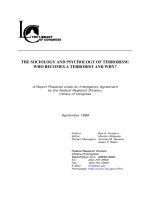
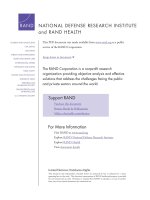
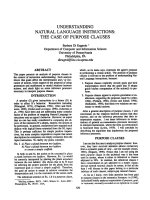

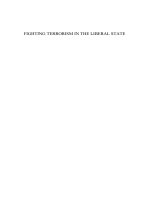
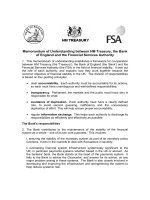

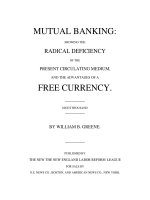

![understanding aerodynamics - arguing from the real physics - j. mclean (wiley, 2013) [ecv] ww](https://media.store123doc.com/images/document/14/y/yv/medium_6Z5GycMQua.jpg)